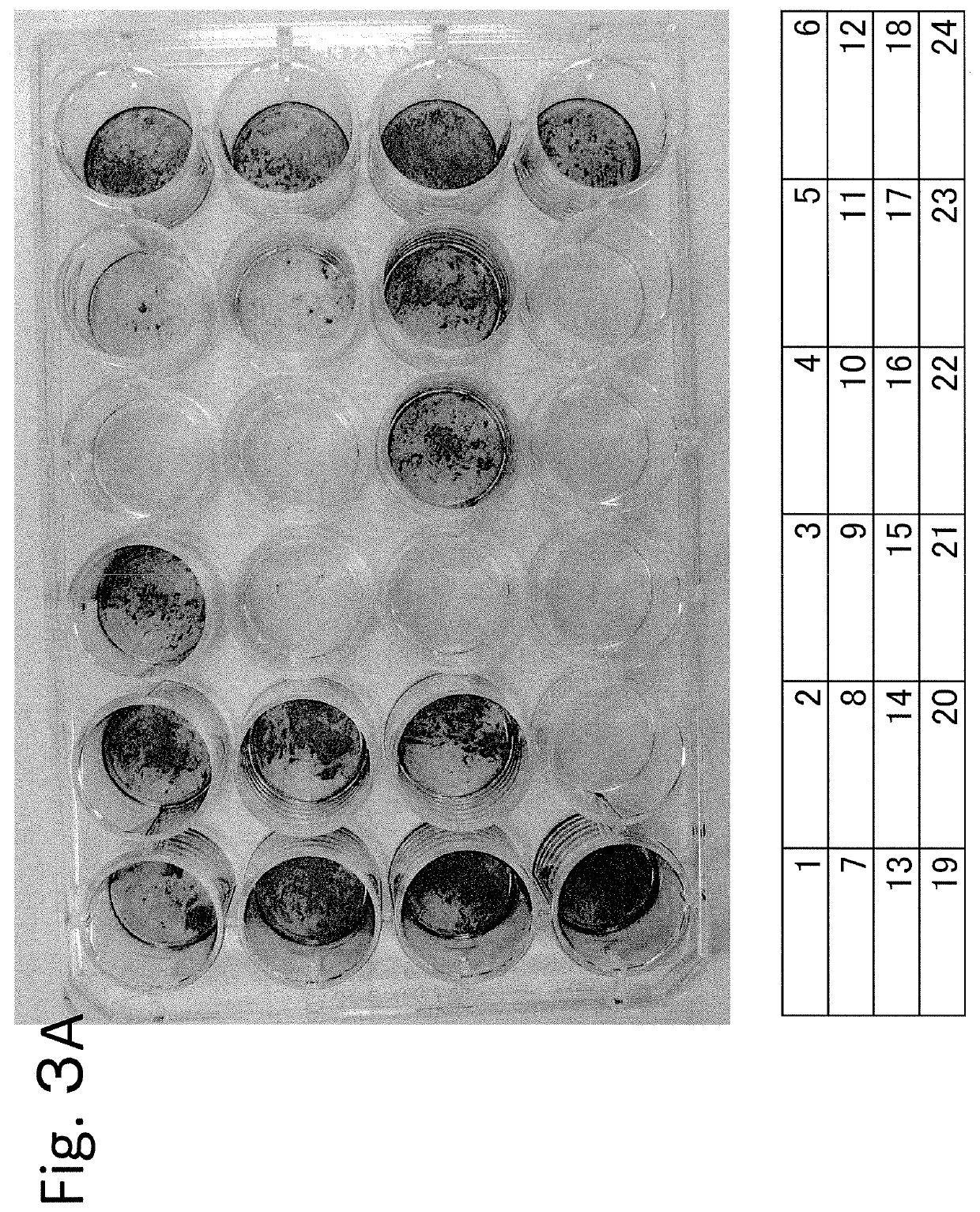Osteoblast and method for preparing same
a technology of osteoblasts and osteoblasts, which is applied in the field of osteoblasts and a method of preparing osteoblasts, can solve the problems of increasing osteoporosis, prolonged bed rest, and problems in bone marrow collection
- Summary
- Abstract
- Description
- Claims
- Application Information
AI Technical Summary
Benefits of technology
Problems solved by technology
Method used
Image
Examples
example 1
(1) Preparation of pMXs Vectors Coding for Genes of Interest (FIG. 1)
[0139]Genes of interest (Runx2 and the like) were amplified from a plasmid including the genes of interest by PCR using primers for coding regions (base sequences of the primers are shown in FIG. 23). In addition, pMXs puro vector was cleaved with EcoRI. The resultant fragments were separated by electrophoresis, and then genes and the back bone of the vector were extracted from the electrophoresis gel. Both of them were ligated using GeneArtsystem to prepare pMXs vectors coding for genes of interest. The base sequences of those vectors were confirmed using the primers shown in FIG. 24.
(2) Outline of Experiment (FIG. 2)
[0140]3×106 Plat GP cells were inoculated into a 10-cm dish coated with keratin and cultured in 1% NEAA 10% FBS DMEM (normal medium) containing 100 U / ml penicillin and 100 μg / ml streptomycin. 24 Hours later, the pMXs vectors including various genes were introduced into Plat GP serving as packaging cel...
PUM
| Property | Measurement | Unit |
|---|---|---|
| concentration | aaaaa | aaaaa |
| pore diameter | aaaaa | aaaaa |
| temperature | aaaaa | aaaaa |
Abstract
Description
Claims
Application Information
 Login to View More
Login to View More - R&D
- Intellectual Property
- Life Sciences
- Materials
- Tech Scout
- Unparalleled Data Quality
- Higher Quality Content
- 60% Fewer Hallucinations
Browse by: Latest US Patents, China's latest patents, Technical Efficacy Thesaurus, Application Domain, Technology Topic, Popular Technical Reports.
© 2025 PatSnap. All rights reserved.Legal|Privacy policy|Modern Slavery Act Transparency Statement|Sitemap|About US| Contact US: help@patsnap.com



